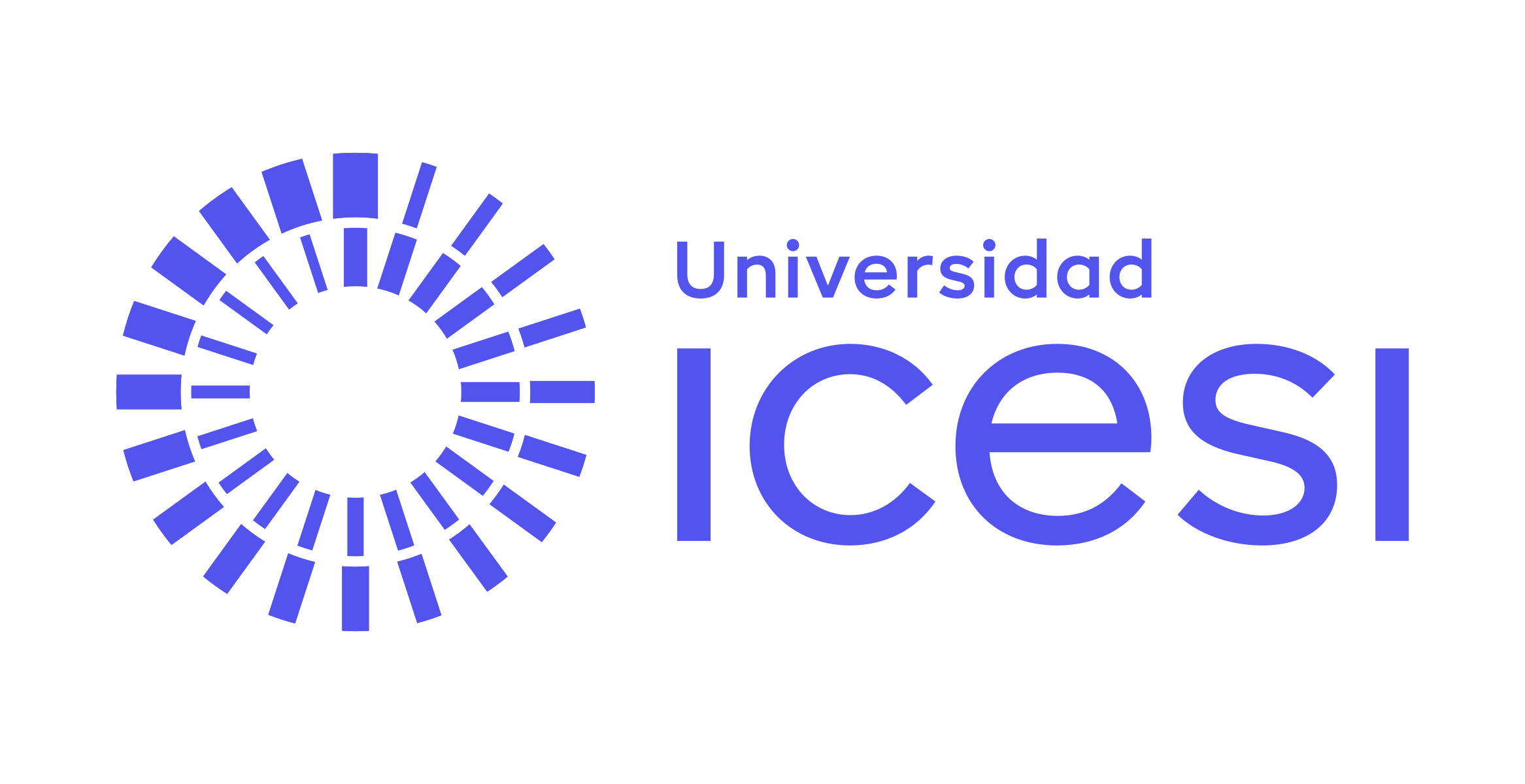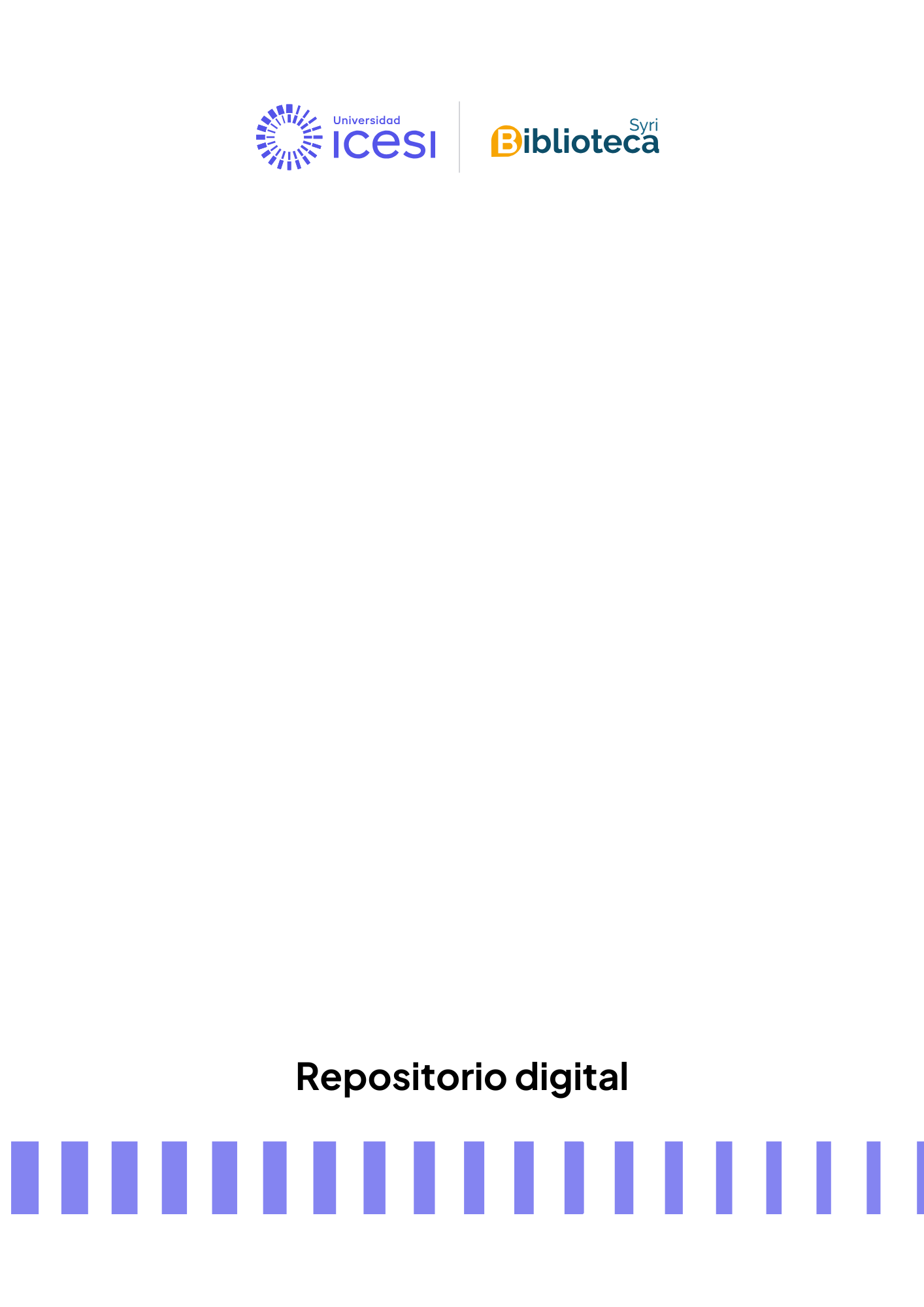Sistemas y Telemática Vol. 6 No. 12
URI permanente para esta colecciónhttp://hdl.handle.net/10906/1835
Examinar
Envíos recientes
Ítem Vol. 6 No. 12, Julio/Diciembre 2008 / SISTEMAS y TELEMATICA(Universidad Icesi, 2008-07-01) Universidad IcesiEsta edición incluye: Modelado de flujos de caudal y pronóstico utilizando una red neuronal RBF; Efecto de la frecuencia portadora sobre los valores propios de los sistemas MIMO en interiores; Aspectos claves en la definición y adopción de estándares de interoperabilidad electrónica de datos: El caso de HL7 en el área de la salud; Integración de un panel de alarma de incendio y un sistema de cámaras de vigilancia IP con la consola de seguridad informática OSSIM; Un método de compresión de mallas basado en una representación simplicial; Análisis descriptivo del proceso de implementación del nivel 2 del modelo CMMI en una empresa regional de desarrollo de soe; y Generación eficiente de malla usando subdivisión de superficies.Ítem Análisis descriptivo del proceso de implementación del nivel 2 del modelo CMMI en una empresa regional de desarrollo de software(Universidad Icesi, 2008-12-18) Picazzo M., Catherine; Villegas Machado, Norha Milena; Tamura Morimitsu, GabrielCMMI (Capability Maturity Model Integration) is basically a continuous- improvement inspired model to classify software development organizations according to a fivelevel maturity and capability scale. The classification in a given level is based on the dominance that an organization shows evidence to have over the areas of that level, which in turn reflects the degree of maturity of the organization and of the processes that it follows to develop software. This article presents a preliminary descriptive analysis of a level 2 implementation process of the CMMI model in a Colombian software development company, making an overall presentation of how it was brought into practice the theory of the model in the processes of the company, to be compliant with the conditions, goals and practices defined in the level 2 process areas of the model. The article also describes the problems which arose in the execution of the project, as well as how they were solved. As preliminary results are presented some of the indicators defined by the company for the software processes, and the software tools that were acquired or developed for the support of the implementation of the process areas. Finally, some conclusions and recommendations which can be found.Ítem Efficient Mesh Generation Using Subdivision Surfaces(Universidad Icesi, 2008-12-18) Navarro Newball, Andrés Adolfo; Wyvill , Geoff; McCane, BrendanPolygonal meshes and particularly triangular meshes are the most used structure for 3D modelling. The ‘direct edges’ data structure is the most efficient way to represent them and subdivision surfaces is an appropri ate method to generate them. From a review of subdivision surfaces we chose the ‘!3 subdivision’ method for mesh generation. Our main challenge was to take advantage of the direct edges data structure and to find the right formulas for an efficient implementation. We decided to use files in the 3DS file format and convert them to the direct edges data structures for use in our application. We tested our algorithm with arbitrary mesh topologies and calculated efficiency. Our implementation will be used in the creation of a virtual dog head.Ítem Un método de compresión de mallas basado en una representación simplicial(Universidad Icesi, 2008-12-18) Navarro Newball, Andrés Adolfo; Herrera Botero, Francisco Julián; Múnera Salazar, Luis EduardoPolygonal meshes, which approximate the surface of an object, are the most common method for representing three dimensional objects. Here, in order to attain efficiency, the triangle is the most used polygon. However, the number of required triangles increases as more realism is needed in a complex form. For this reason, mesh optimization techniques have been created that keep resolution and enhances performance. This way, the polygonal mesh occupies less memory space. This paper presents a mesh compression technique which is based on mathematical topology and the simplicial representation. This technique was developed in order to compress meshes that were going to be sent through Internet.Ítem Integración de un panel de alarma de incendio y un sistema de cámaras de vigilancia IP con la consola de seguridad informática OSSIM(Universidad Icesi, 2008-12-18) Latorre, Cristian; Cárdenas, Luis Ernesto; Bedoya, Rodrigo; Madrid Molina, Juan Manuel; Osorio Betancur, Juan DavidSecurity consoles are among the most widely deployed tools for enterprise- wide information security management. In order to assure an optimal coverage of the information security requirements according to international standards, security consoles should take into account the physical security domain. This article summarizes the work of our research team, in order to integrate a fire alarm control panel and an IP surveillance camera system with the OSSIM information security console.Ítem Aspectos claves en la definición y adopción de estándares de interoperabilidad electrónica de datos : El caso de HL7 en el área de la salud(Universidad Icesi, 2008-12-18) Tamura Morimitsu, Gabriel; Villegas Machado, Norha MilenaThis article presents the results of the analysis that the DRISO research group has conducted about some aspects which have been found as critical in the process of definition and adoption of standards for exchange of electronic data, in the context of the HL7 standard for interoperability in health. For each considered aspect, its potential contribution to a standard for semantic interoperability is identified, as well as how it is used in the modeling of the objects to exchange, and in the modeling of the exchange process itself. The analysis of the critical aspects of standards is done following the line of the evolution of HL7 standard, identifying and distinguishing their structural and dynamic aspects. Finally, as a matter of conclusion, a reflection about the applicability of this analysis to the Colombian Ministry of Communications GEL-XML project, for electronic data exchange of basic data in all sectors of the economy.Ítem Carrier frequency effect on the MIMO eigenvalues in an indoor environment(Universidad Icesi, 2008-12-17) Reig, Juan; Llano Ramírez, Gonzalo; García Ariza, Alexis Paolo; Rubio, LorenzoThe effect of the carrier frequency on the multiple-input multiple-output (MIMO) system eigenvalues is investigated experimentally in an indoor environment considering lineof- sight (LOS) and non-line-of-sight (NLOS) conditions. The results show a reduction of the mean power gain in the MIMO system eigenvalues due to a correlation increment between the spatial subchannels when the carrier frequency increases. This effect causes a slightly reduction of the MIMO capacity.Ítem Water flows modelling and forecasting using a RBF neural network(Universidad Icesi, 2008-12-17) Fajardo Toro, Carlos Hernán; Fernández Riverola, Florentino; Soto González, Benedicto; González Peña, DanielA hydrologic estimation model base on the utilization of radial basis function neural networks is presented, in which the aim is to forecast stream flows in an automated fashion. The problem of river flow forecasting is a non-trivial task because (i) the various physical mechanisms governing the river flow dynamics act on a wide range of temporal and spatial scales and (ii) almost all mechanisms involved in the river flow process present some degree of nonlinearity. The proposed neural network was used to forecast daily river discharges in a river basin providing satisfactory results and outperforming previous.

